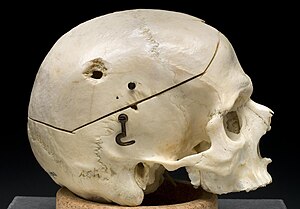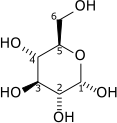User:Robotsintrouble/Sandbox
general wiki references: http://en.wikipedia.org/wiki/Category:Wikipedia_maintenance_templates http://en.wikipedia.org/wiki/Wikipedia:Cheatsheet
grey's anatomy: http://en.wikipedia.org/wiki/Wikipedia:Gray%27s_Anatomy_images_with_missing_articles http://en.wikipedia.org/wiki/List_of_images_and_subjects_in_Gray%27s_Anatomy
medicine nav templates: http://en.wikipedia.org/wiki/Wikipedia:Navigational_templates#Medicine http://en.wikipedia.org/wiki/Wikipedia:Navigational_templates/Science#Medicine http://en.wikipedia.org/wiki/Category:Medical_navigational_boxes
embryo: http://en.wikipedia.org/wiki/Mammalian_embryogenesis
cell biology wikiproject: http://en.wikipedia.org/wiki/Wikipedia:WikiProject_Molecular_and_Cellular_Biology
clinical anatomy wikiproject: http://en.wikipedia.org/wiki/Wikipedia:WikiProject_Clinical_medicine http://en.wikipedia.org/wiki/Wikipedia_talk:WikiProject_Clinical_medicine http://en.wikipedia.org/wiki/Wikipedia:WikiProject_Clinical_medicine/Writing_medical_articles#References
wikiproject anatomy: http://en.wikipedia.org/wiki/Wikipedia_talk:WikiProject_Anatomy http://en.wikipedia.org/wiki/List_of_muscles_of_the_human_body
misc:
http://en.wikipedia.org/wiki/Category:Wikipedia_featured_widescreen_desktop_backgrounds http://en.wikipedia.org/wiki/Microphallus
|
Hi!
[edit]Hi there, USERNAME, and welcome to Wikipedia! Good authors are always welcome on the project, and I hope you like the place and decide to stick around! I liked your edit on articlename, keep it up!
We've got a few pages you might find helpful, such as:
It's all best summed up here: write from a neutral point of view, play nice with others, and don't let the rules get you down.
If you have any questions or need any help, my talkpage is always open for business, or you can see Wikipedia:Newcomers help page. Here's a tip to start you off: if you type four tildes (~~~~) at the end of any messages you leave on talkpages (like this one) Wikipedia will automatically insert your name and the current date and time after your message. Cool, eh? Happy editing!
Muscle template etc
[edit]| Muscle | Innervation | Origin | Insertion | Primary function | Secondary function | Tertiary function |
|---|---|---|---|---|---|---|
| Superior rectus | Oculomotor nerve | Annulus of Zinn | eye (anterior, superior surface) | Elevation | Intorsion | Adduction |
| Inferior rectus | Oculomotor nerve | Annulus of Zinn | eye (anterior, inferior surface) | Depression | Extorsion | Adduction |
| Lateral rectus | Abducens nerve | Annulus of Zinn | eye (anterior, lateral surface) | Abduction | ||
| Medial rectus | Oculomotor nerve | Annulus of Zinn | eye(anterior, medial surface) | Adduction | ||
| Superior oblique | Trochlear nerve | Annulus of Zinn | eye (posterior, superior, lateral surface) | Intorsion | Depression | Abduction |
| Inferior oblique | Oculomotor nerve | Lacrimal bone | eye (posterior, inferior, lateral surface) | Extorsion | Elevation | Abduction |

2 = Superior rectus muscle
3 = Inferior rectus muscle
4 = Medial rectus muscle
5 = Lateral rectus muscle
6 = Superior oblique muscle
7 = Trochlea
8 = Inferior oblique muscle
9 = Levator palpebrae superioris muscle
10 = Eyelid
11 = Eyeball
12 = Optic nerve
Simon's ideas have come under criticism from authors such as Garrett Hardin in his book The Ostrich Factor: Our Population Myopia, physicist Albert Bartlett in his paper, The New Flat Earth Society and Jared Diamond in his book Collapse. They point to Simon's assertion, in the context of space colonization, that "We now have in our hands—really, in our libraries—the technology to feed, clothe, and supply energy to an ever-growing population for the next seven billion years." Diamond and others[1] also interpret statements by Simon in The Ultimate Resource (page 47), as suggesting that in the future it would be possible to produce "copper" by transmutation from other elements:
There is an abundance of errors of the latter sort: e.g., overly optimistic predictions that the Green Revolution would already have solved the world's hunger problems; the prediction of the economist Julian Simon that we could feed the world's population as it continues to grow for the next 7 billion years; and Simon's prediction "Copper can be made from other elements" and thus there is no risk of a copper shortage. As regards the first of Simon's two predictions, continuation of our current population growth rate would yield 10 people per square foot of land in 774 years, a mass of people equal to the earth's mass in under 2,000 years, and a mass of people equal to the universe's mass in 6,000 years, long before Simon's forecast of 7 billion years without such problems. As regards his second prediction, we learn in our first course of chemistry that copper is an element, which means that by definition it cannot be made from other elements. Jared Diamond, Collapse, 2005 (paperback) pp509-10
It must be noted that Simon had originally said not "copper" but "copper or its economic equivalent" and later clarified this with the additional response "It takes much less copper now to pass a given message than a hundred years ago." (The Ultimate Resource 2, footnote, page 62).

Enzyme pathway
[edit]| Glucose-1-phosphate | {{{forward_enzyme}}} | Glucose-6-phosphate | |
| [[image:]] | File:Alpha-D-Alpha-D-glucose-6-phosphate wpmp.png | ||
| {{{minor_forward_substrate(s)}}} | {{{minor_forward_product(s)}}} | ||

| |||
| Phosphoglucomutase | |||
Gives, for example:
| Glucose | {{{forward_enzyme}}} | Glucose-6-phosphate | |

|

| ||
| {{{minor_forward_substrate(s)}}} | {{{minor_forward_product(s)}}} | ||

| |||
VDCCs
[edit]Voltage-dependent calcium channels (VDCC) are a group of voltage-gated ion channels that are sensitive to changes in the membrane potential. These channels open or close in response to changes in the membrane potential, most notably the depolarizing stimulus of an action potential. In certain cells, calcium is more important for propagation of the action potential than sodium.
VDCCs are also permeable to sodium ions, and are sometimes called Calcium-sodium channels
in excitable cells (e.g. neurons, glial cells, muscle cells) that propagate or respond to action potentials.
Nearly all cells actively transport Ca2+ out of the cell via the Plasma membrane Ca2+ ATPase and Sodium-calcium exchanger, forming a concentration gradient with much lower Ca2+ levels inside the cell than outside. Thus, the c have some type of calcium channel or transporter contributing to the membrane potential by regulating the membrane permeability of the , but only in excitable cells that respond to a depolarizing action potential
which plays a role in the membrane potential. VDCCs are involved in the release of neurotransmitters and [[hormone]
